Span 46 cm / 18 in
Weight 55 g / 1.94 oz ready to fly
The Dewoitine D.520 was a French fighter aircraft of the Second World War. First flight took place in October 1938 and only in 1953 the plane was retired. Operators of the Dewoitine were not only France but Bulgaria, Italy and Nazigermany. The D.520 had a wingspan of 10.2 m / 33 ft 6 in and a length of 8.6 m / 28 ft 3 in. Gross weight was 2,677 kg / 5,902 lb and powerplant a Hispano Suiza 12 Y-49 piston engine at 950 hp. The D.520’s manoeuvrability was considered to be superior in comparison to the nazi Mess. Bf-109 E by being a bit slower. All together around 900 Dewoitine D.520s were built.
My plan of the D.520 was published in 2024 by OUTERZONE VINTAGE & OLD-TIMER PLANS. See https://outerzone.co.uk/plan_details.asp?ID=15325
Note: I offer two plans of this model, one with built-in rubber motor (2001) the other for RPU 30 (here).
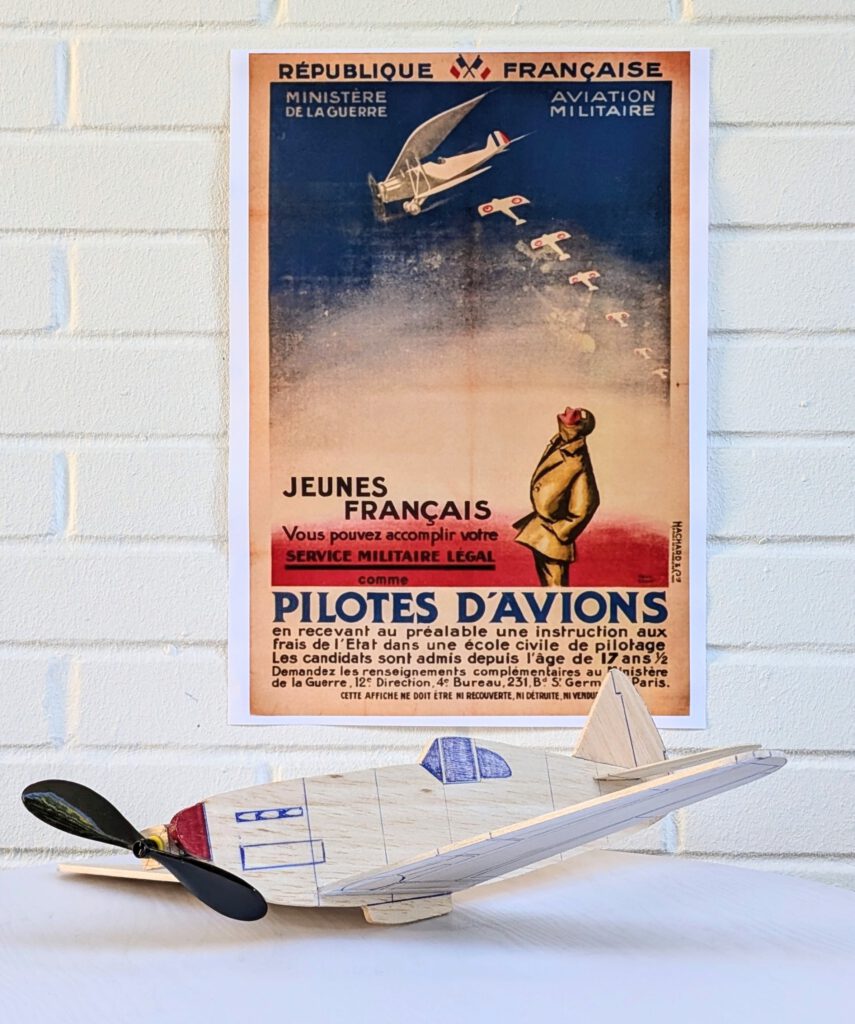
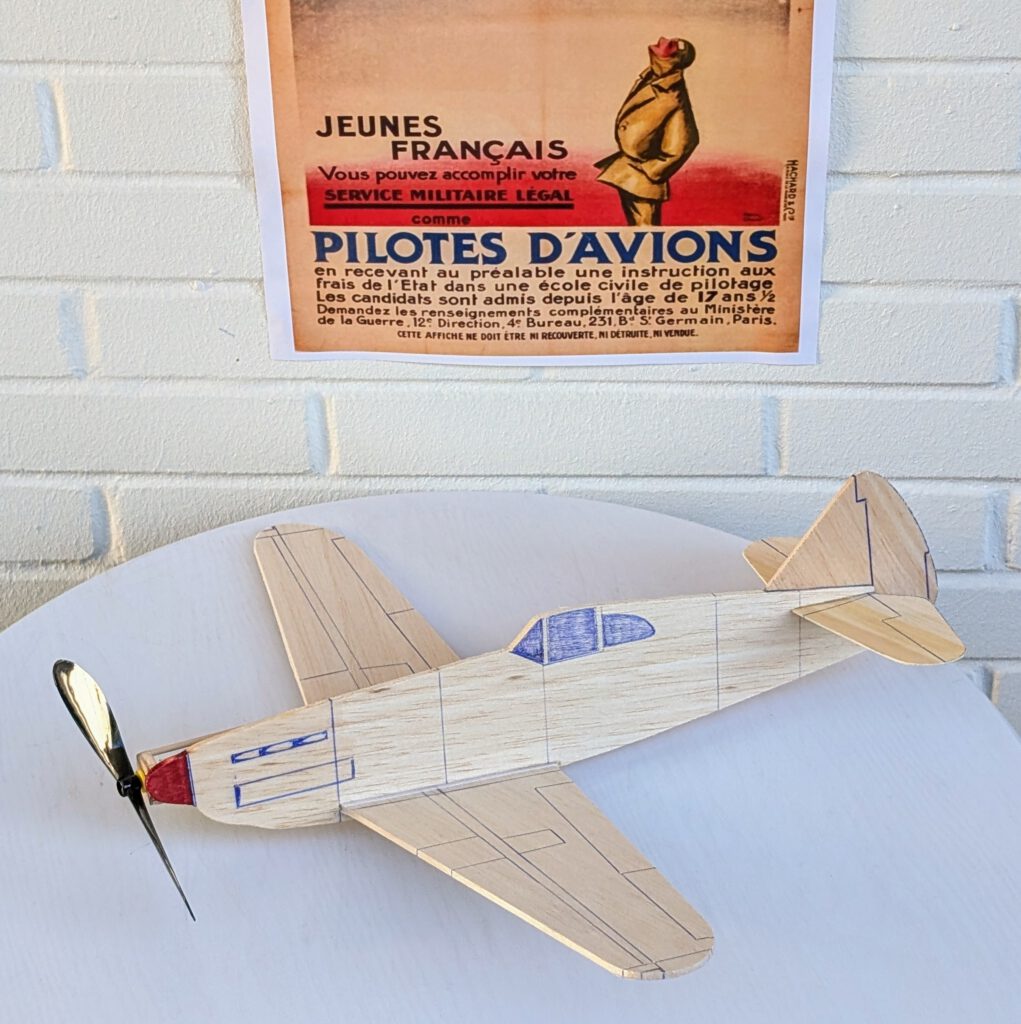



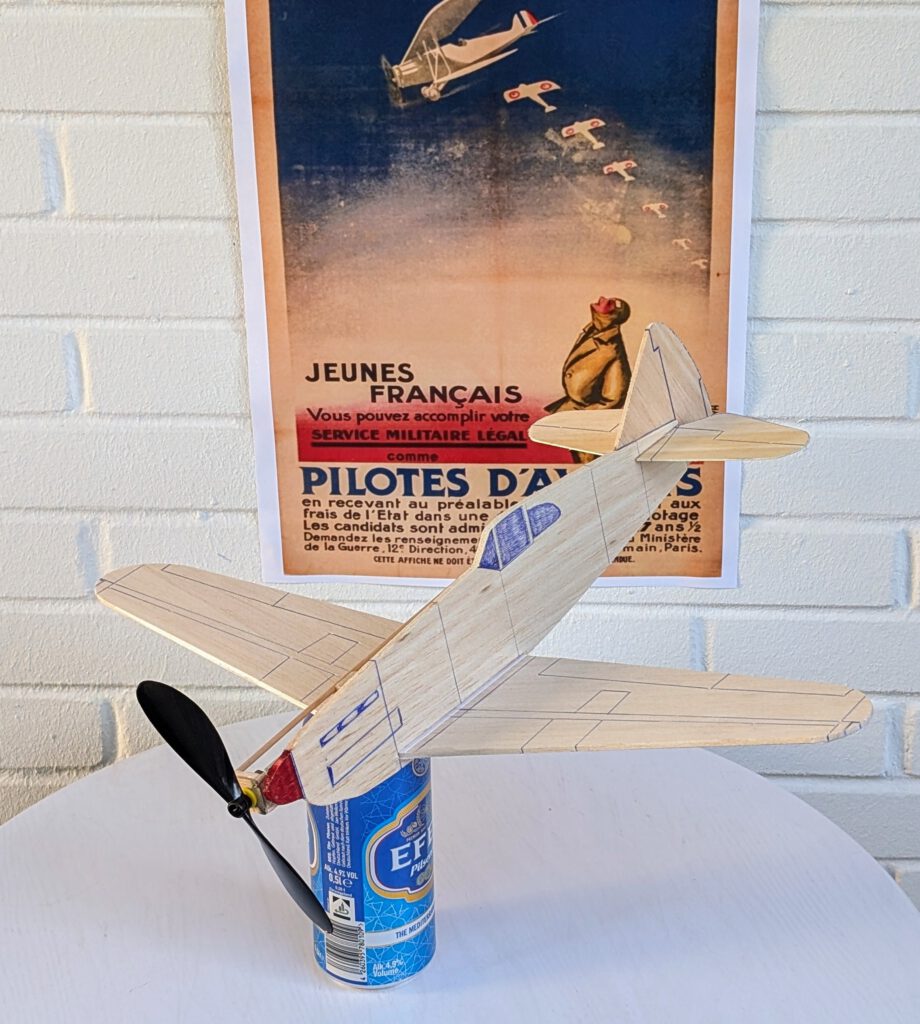
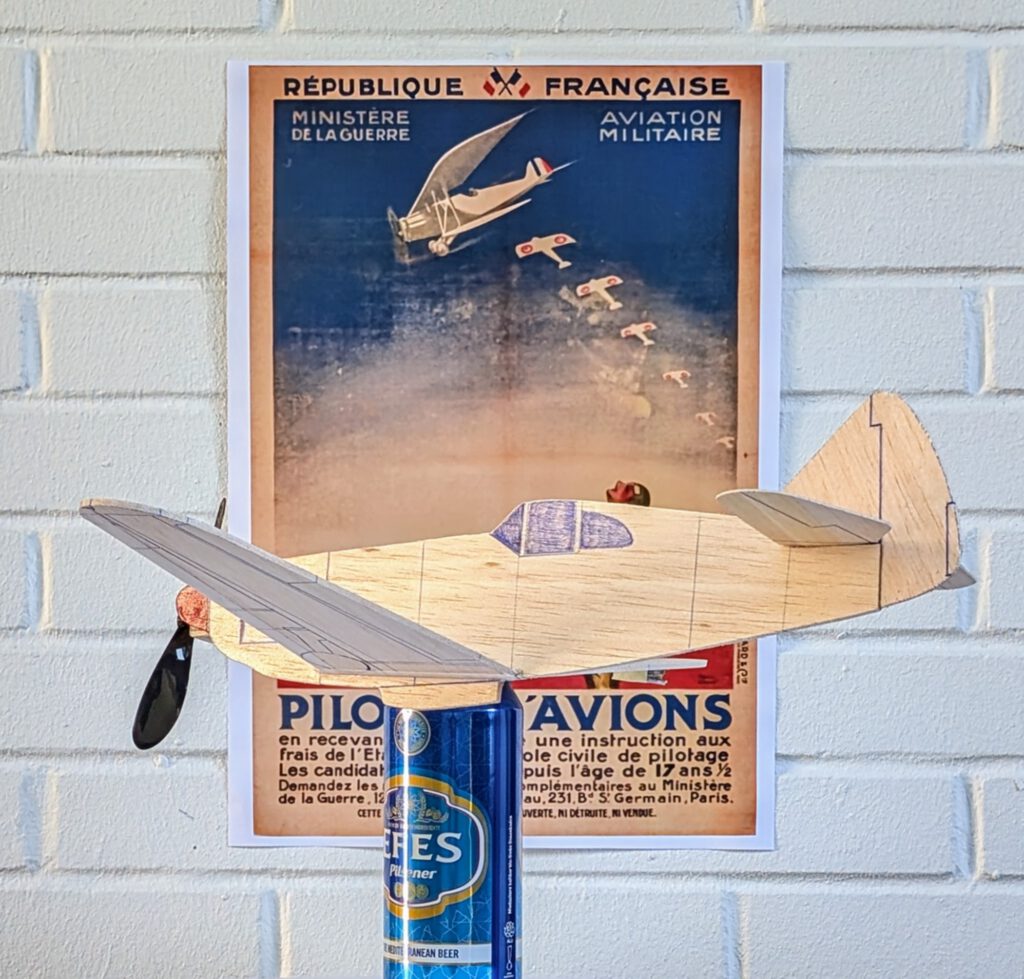

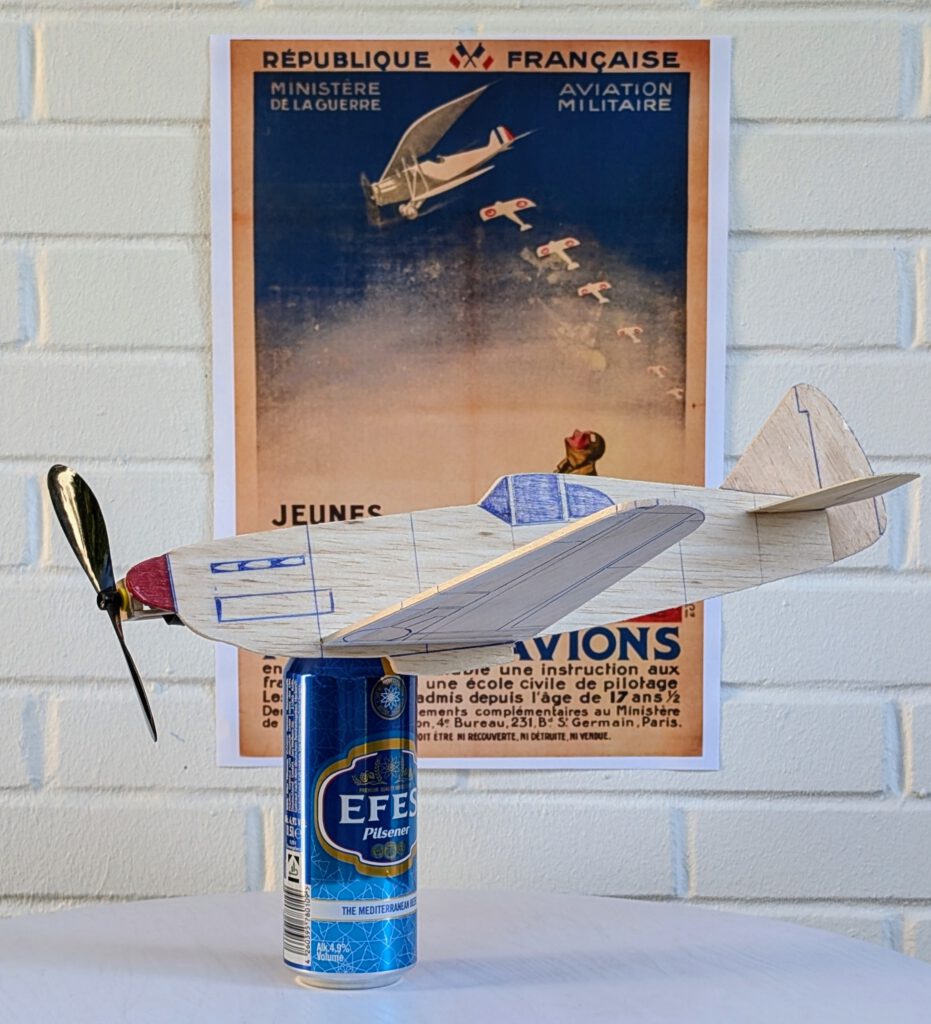

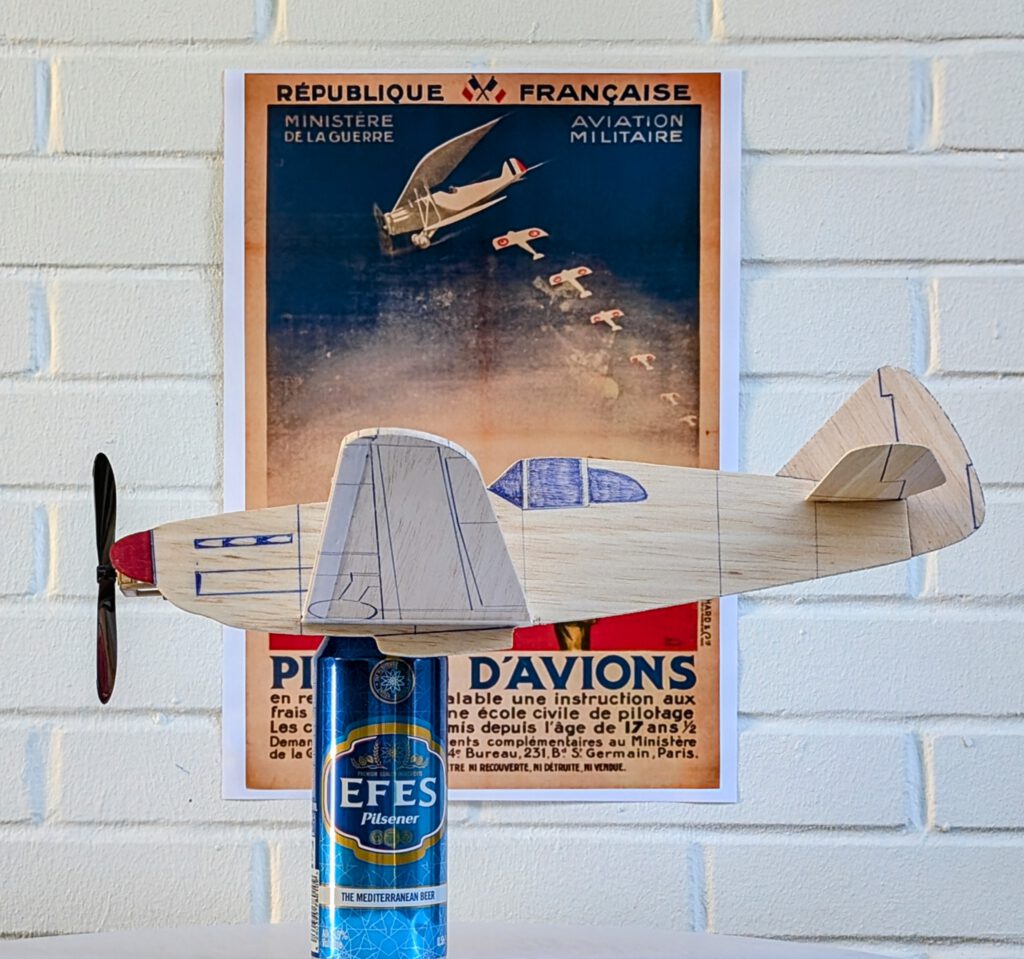
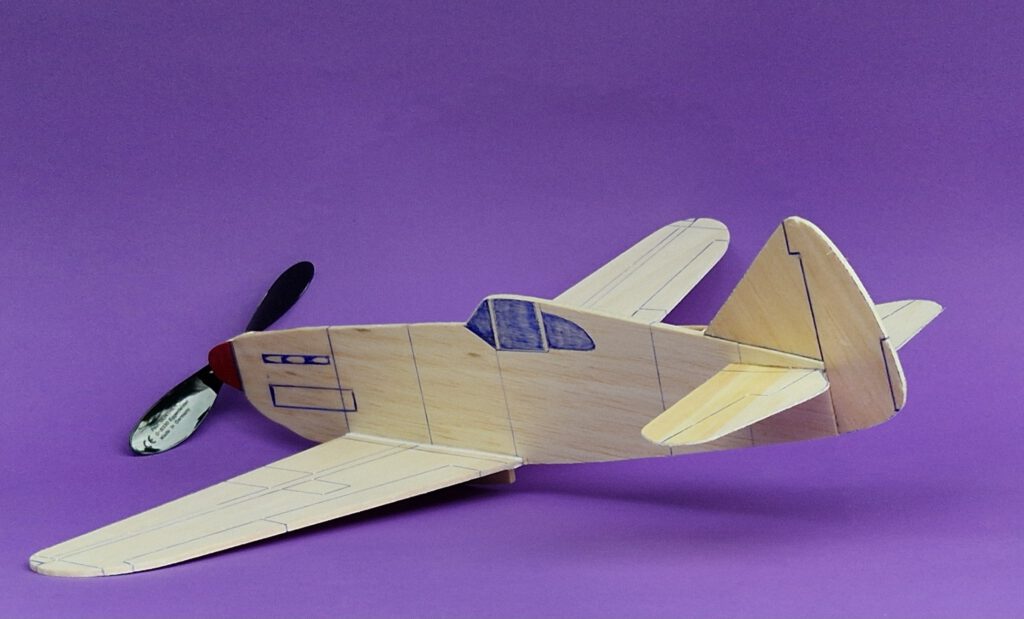
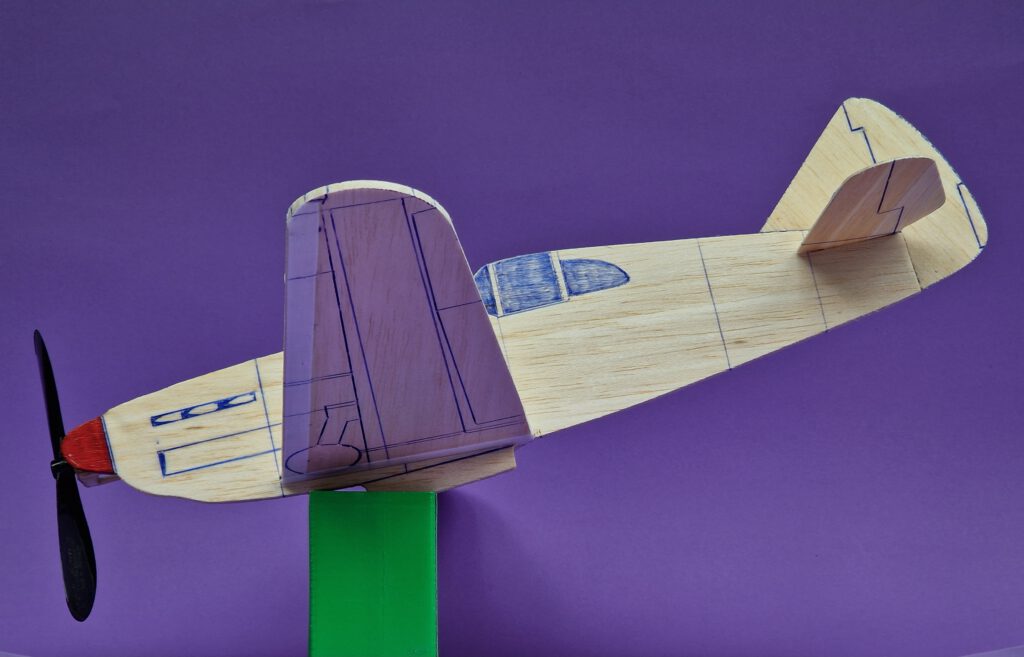
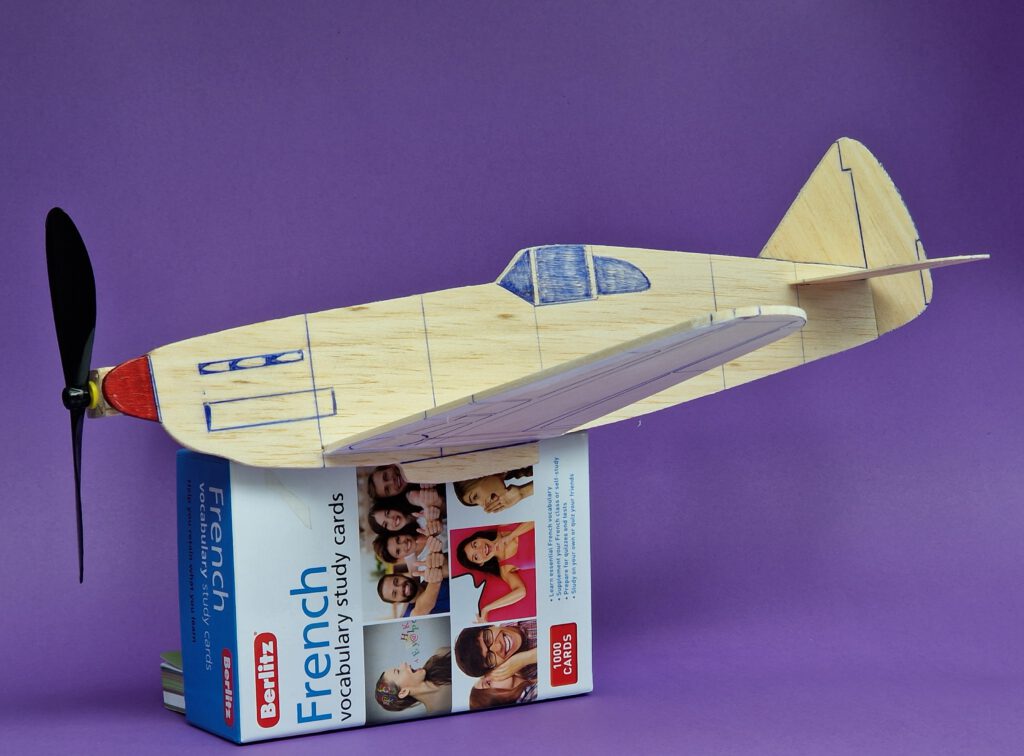
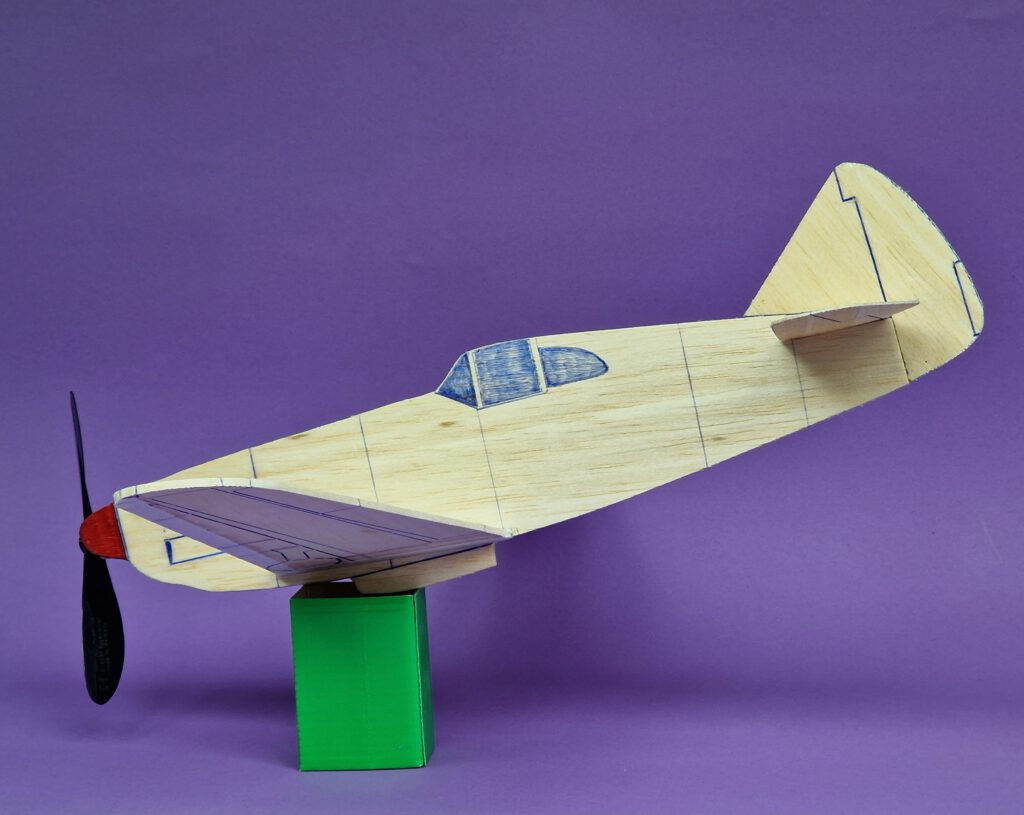
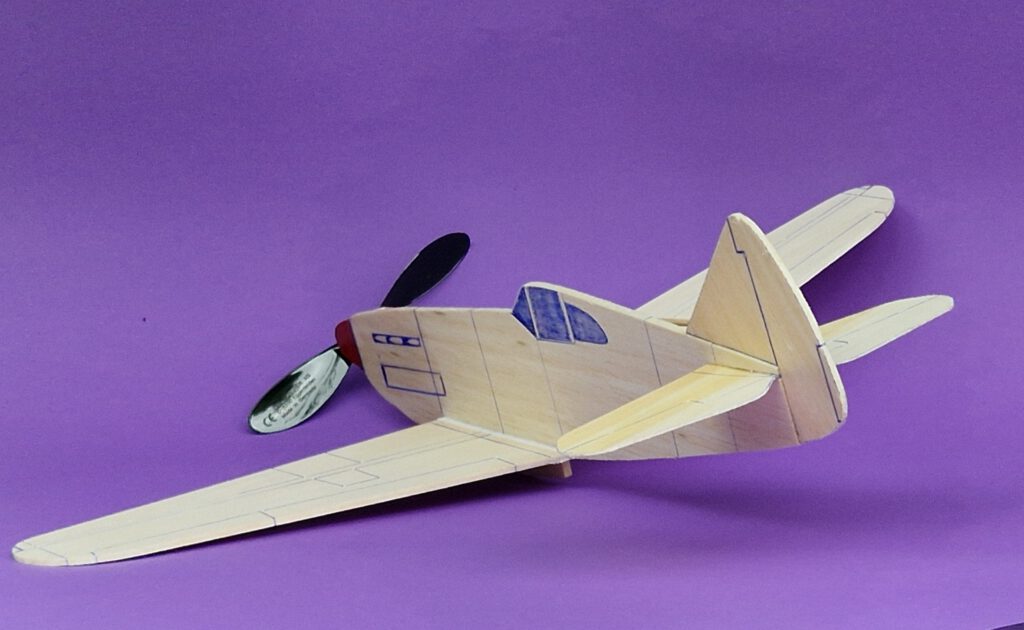
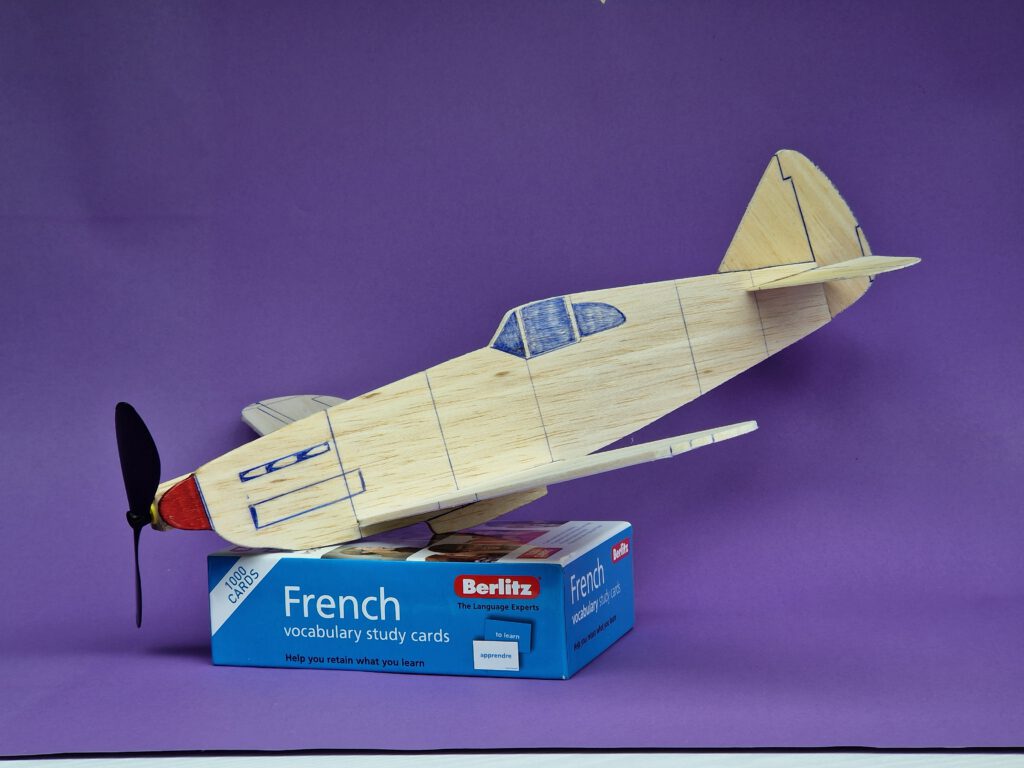
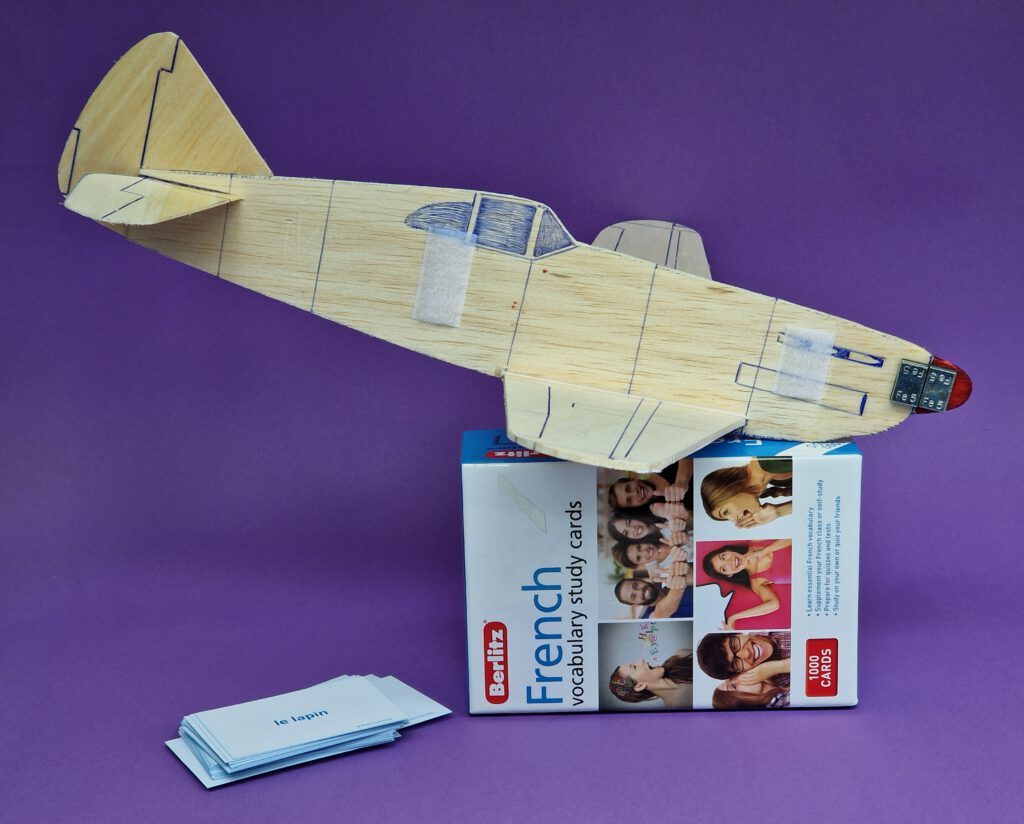
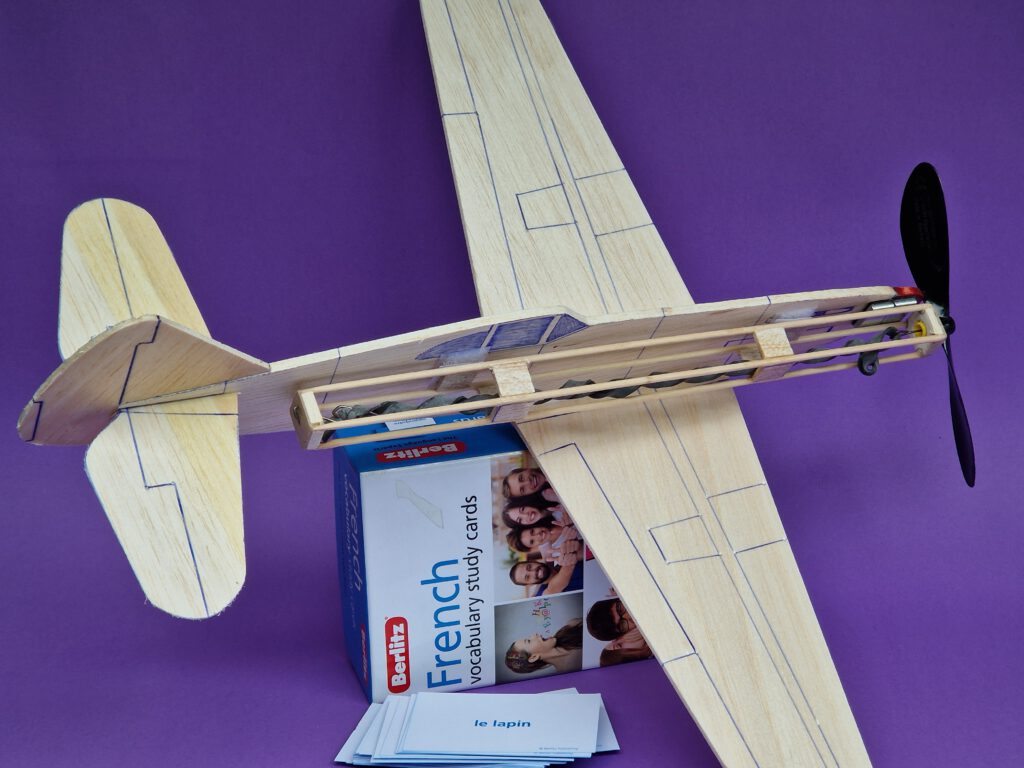
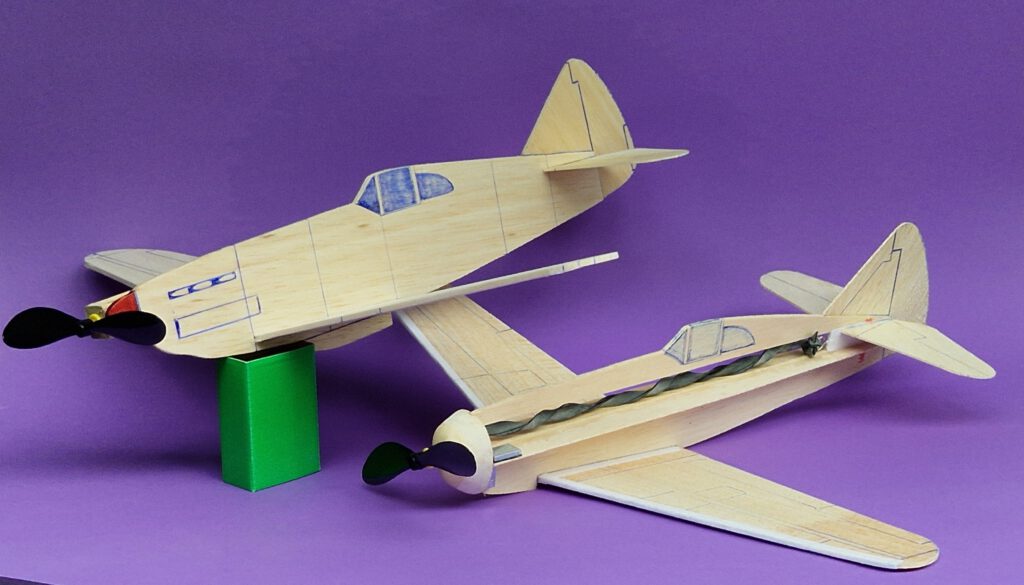
What is RPU?
RPU stands for rubber power unit.
This is a device designed for the model builder who likes to fly many easy built models with one only power unit. Main material of the RPU comes from the grocery store around the corner: four barbecue skewer chopsticks. Add to them scratch balsa, a hook made from piano wire, some black rubber and a commercial plastic airscrew. That’s all.
The unit is attachable through two pieces of Velcro tape and can thus be used for example first on a little Hurricane five minutes later on a Raiden and ten minutes later on a Reggiane 2005 of the same configuration. You build only one RPU and use it on as many modelplanes as you wish.
Models with RPU use the same asymmetrical principle as is known from No-cal models. From the one side they look handsome as from the other the power unit disturbs the harmonic view considerably.
Generally there is no great difference between the flight performances of a balsa sheet profile model with built-in rubber motor and a similar model flying on a RPU.
Why not try both principles? Among the plans range of beginner.zone you will find models of both categories. Sit down, build, fly, compare!
I developed and tested three different types of RPUs.
- The one for small models of 30 cm / 11.8 in to 40 cm / 15.75 in wingspan is the RPU 20 (lenghth 20 cm / 7.9 in).
- The one for medium sized models with a span of 40 cm / 15.75 in to 60 cm / 23.6 in is the RPU 30 (length 30 cm / 11.8 in).
- The one for larger models of up to 80 cm / 31.5 in wingspan is the RPU 40 (length 40 cm / 15.75 in).
- The RPU 40 is made from slightly different material. Instead of the skewer chopsticks it uses two strips of bamboo wooden sticks (400 x 9 x 3 mm). The rest is identical.
Building the balsa sheet profile fuselage model Dewoitine D.520 RPU:
Materials:
Fuselage: B 4; wing: B 2.5; horizontal stabilizer: B 1; fin: B 1.5 or light B 2; linen band width 10 mm / ½ in; Velcro tape with adhesive backside; ballast: 10 g / 1/3 oz steel or lead.
Assembly:
Cut out balsa parts in accordance to plan (photo). Sand well. Transfer outlines of cockpit windows, rudders, elevators, flaps etc. from paper to wood with pen (photo).
Wing:
Wing consists of a right and a left wing half. Reinforce both wing half leading edges with linen band. Let dry. Fix right wing half on building board with needles. Underlay left wing half tip in accordance to required dihedral. Join both halves and cover wing center area with linen band (photo). Let dry. If wing has the tendency to rest only on one side than it is too heavy on this side. To compensate the imbalance disperse an amount of white wood glue on the opposite wing half’s tip area. Do it if necessary twice until balance is obtained.
Empennage:
Start with vertical stabilizer — cement it into given place in rear fuselage. Visual check symmetry from all sides. Let dry. Horizontal stabilizer is next. Put fuselage on a so called “third hand”. Cement horizontal stabilizer into fuselage slot using needles to hold in place. Visual check from all sides. Symmetry!
Final Assembly:
Put fuselage now upside down on “third hand”. Cement wing into fuselage slot using needles to hold in place. Doublecheck visually symmetry. Let dry. Ventral radiator should be reinforced by amply dispersing wood glue on it. When dry sand this part if necessary.
Velcro band has adhesive backside. Stick two pieces of Velcro according to your RPU on right fuselage side (photo).
For balancing model install RPU and start testgliding over tall grass. Add ballast according to your test results. Note given position of CG on plan.
Remember correct center of gravity (CG) is essential for successful flights.
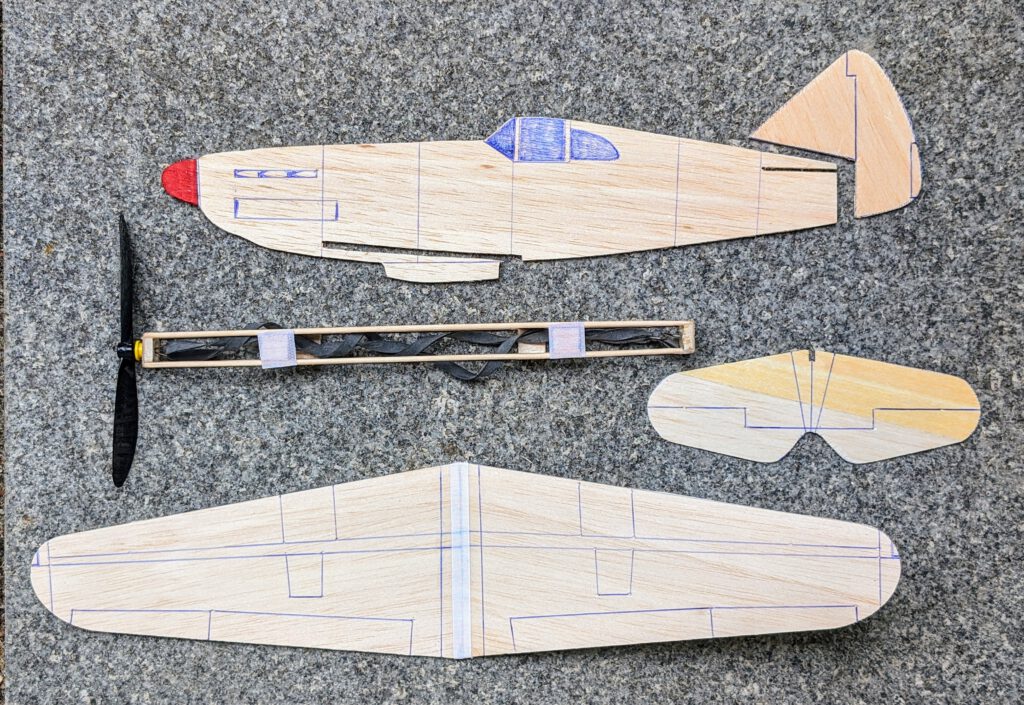
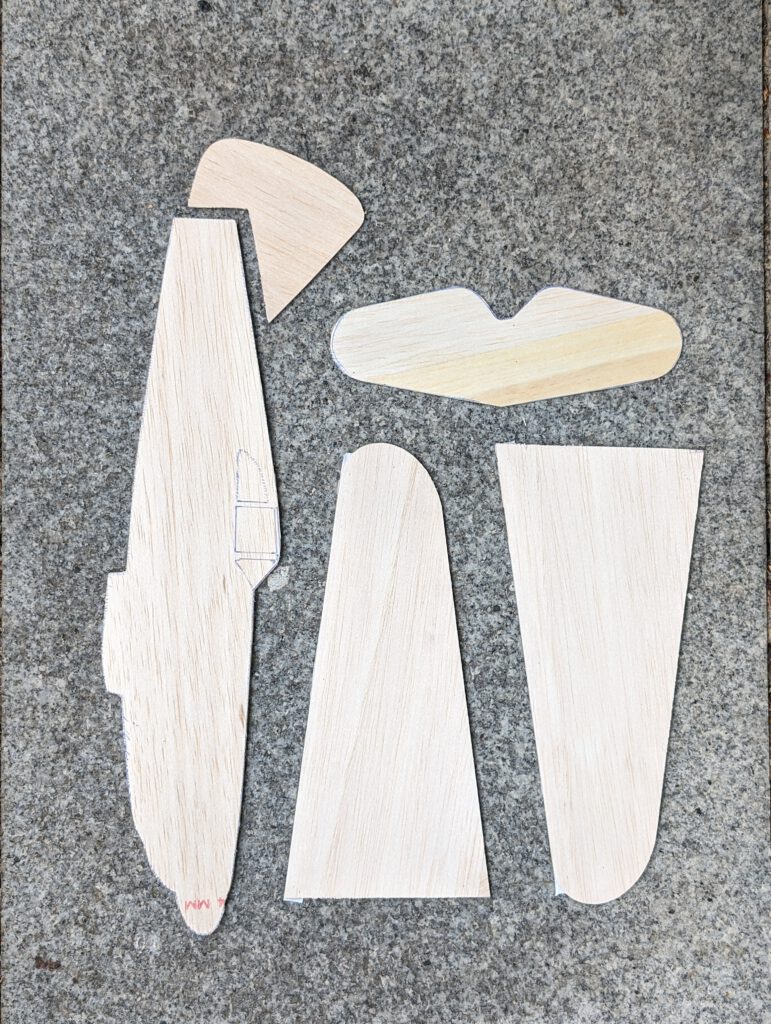
Many successful flights! (Mnogo uspješnih letova!)
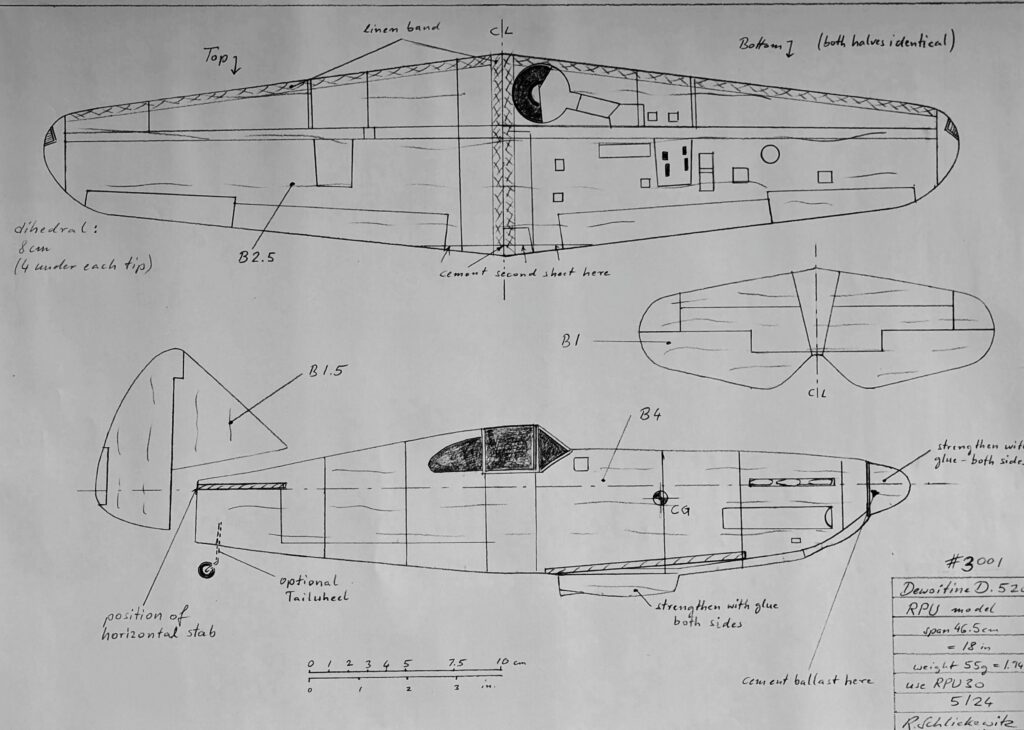

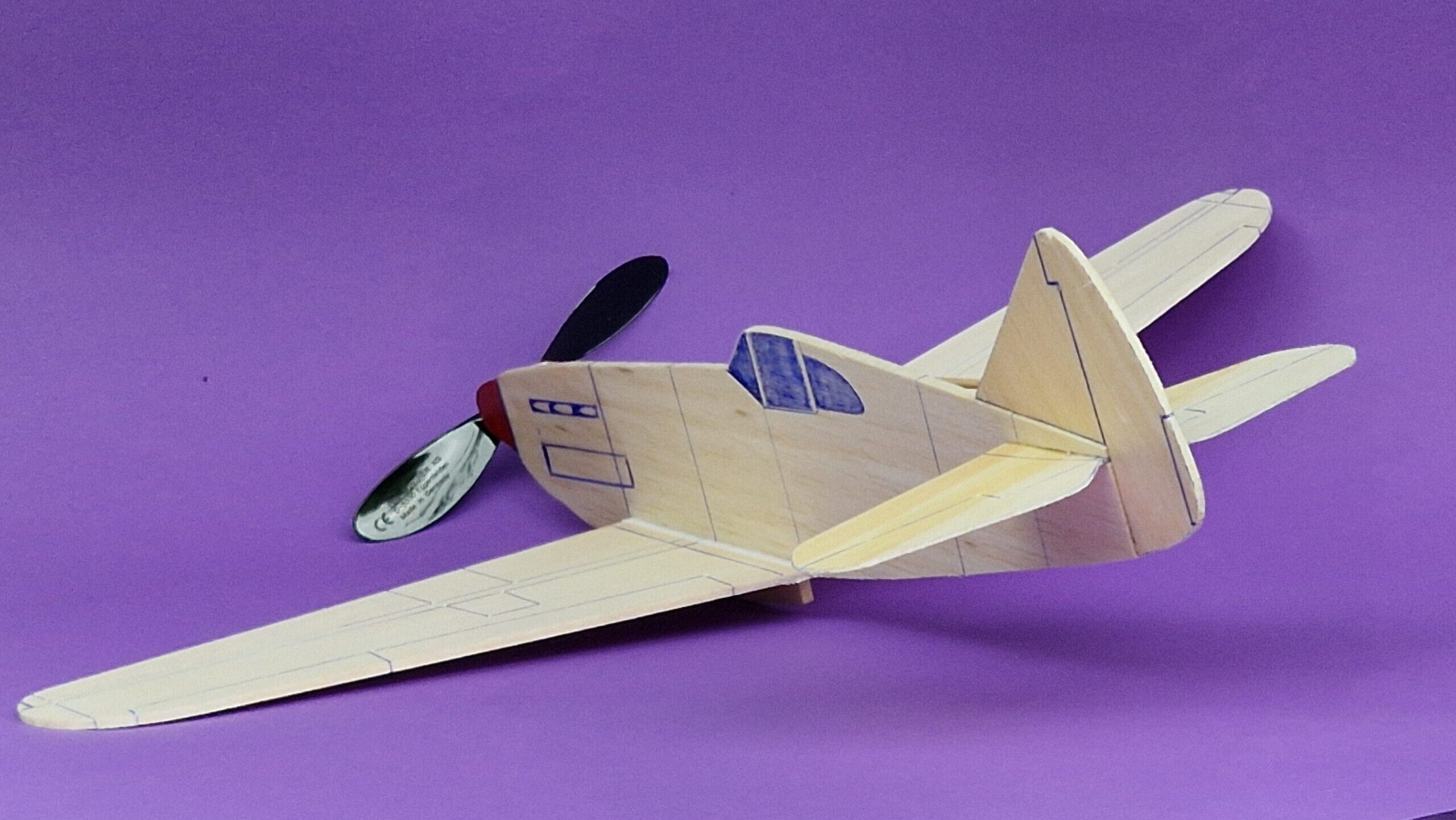
Leave a Reply